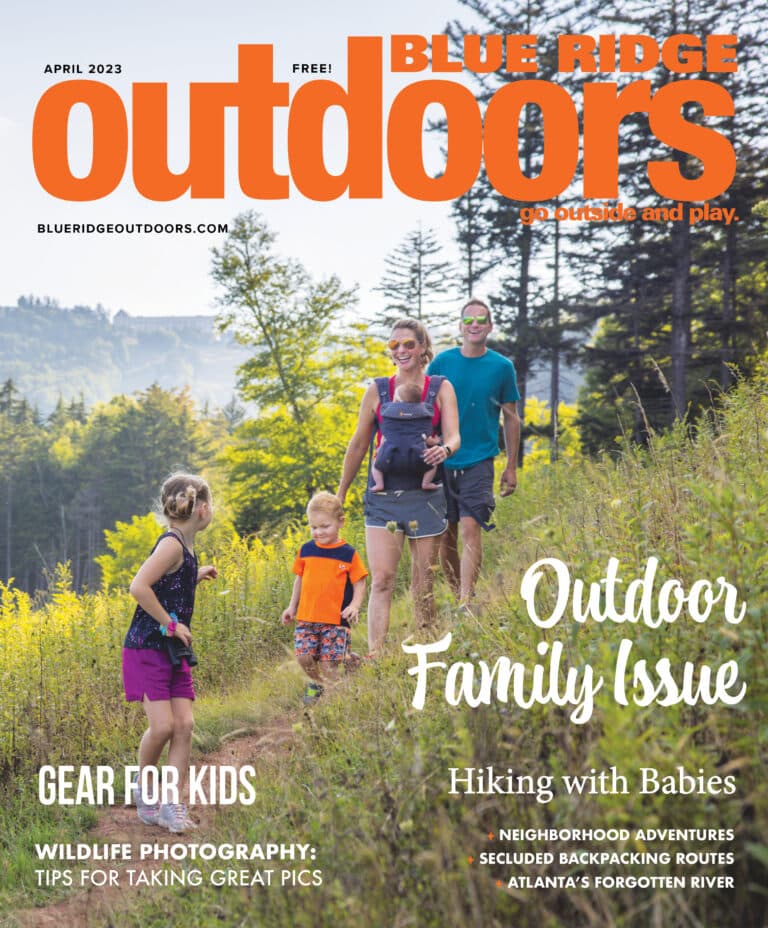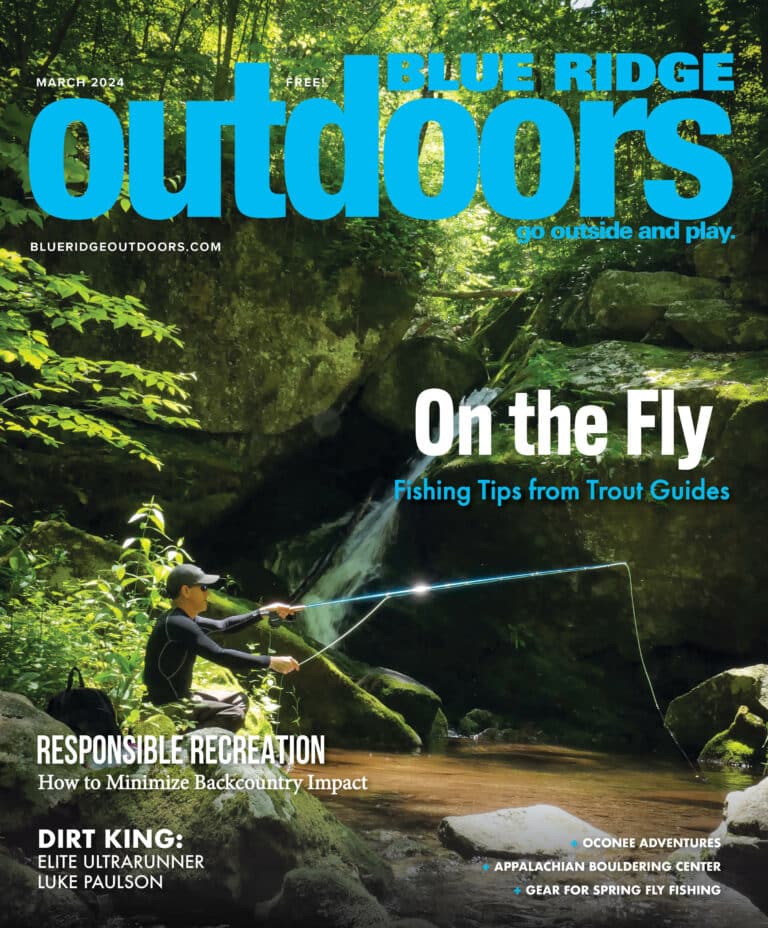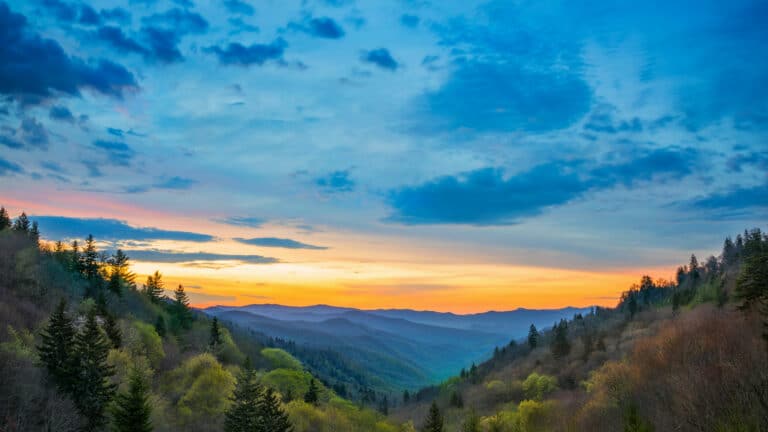Paddling the East’s Wildest Gorge
Recently I saw a nervous squirrel scurry up a tree and drop what appeared to be a giant walnut onto the sidewalk below. Upon further examination, it was not a walnut at all. It was a nibbled piece of chocolate cake. The squirrel must have stolen the cake from some poor, helpless child or senior citizen, I thought to myself as the squirrel waited above me to reclaim his precious morsel.
The beauty and absurdity of the cake-eating squirrel reminded me of my most recent paddling trip in the Linville Gorge. It is a magical place to see with your own eyes, to touch with your hands and feet, and feel with every sense. Carry a kayak on your back into the gorge, paddle the class V whitewater, and you begin to appreciate how small you are in comparison to its greatness. You kind of feel like the squirrel who couldn’t hold onto that big piece of cake. You want it, you’re hungry for it, you might even take a bite of it, but it’s tough to digest all at once.

Cradled on the Eastern slopes of the Appalachian Mountains between the towns of Boone and Morganton, N.C., the Linville Gorge is known as the Grand Canyon of the East. Running a span of twenty-plus miles from the scenic Linville Falls to Lake James, the Linville River is an artery that cuts its way thousands of feet deep into the gorge. The only way to navigate the gorge from beginning to end is by boat. Paddlers first began attempting this run in kayaks as early as 1974. Tom McEwan, Jamie McEwan, and Wick Walker made the first known descents of Linville Gorge in thirteen-foot fiberglass kayaks some 35 years ago. After two valiant efforts and a couple broken kayaks, these three adventurers went on to win Olympic medals and descend waterfalls previously thought to be un-navigable.
Over millennia, the Linville River has carved its way through rock and earth in search of the quickest and most direct path downstream. The falls have migrated upstream nearly twenty miles, and this natural erosive process has given us the East’s deepest and most remote gorge. Across the centuries, house-sized boulders and slabs of rock have toppled into the river, leaving dangerous gaps and holes in the current.
The class-V Linville River is exceptionally technical whitewater, and the consequences of an unplanned capsize or swim can be catastrophic. The gorge is federal wilderness, with no roads or access except from the rim 3,000 feet above. And the river itself is littered with undercut rocks and sieves. Let down your guard on the Linville—even in slower current—and you may very well find yourself pinned beneath a boulder.
Despite the dangers, paddling the Linville River is probably the most rewarding experience in the Southern Appalachians, both visually and physically. When paddling into Cathedral Gorge, where many of Linville’s most difficult rapids congregate, you are greeted with stunning views of Hawksbill and Table Rock, two towering peaks above the canyon. Before attempting to paddle Linville, scouting the river from one of these peaks is a good idea. You won’t see details from that distance, but you’ll get a sense of how deep into this chasm you are going to put yourself.
I always sense a strong undercurrent of nerves as everyone suits up at the put-in. It’s a long, wild river, with one horizon line after another, and no way out. Once you put in, you’re committed.
Traditionally, we have put in at the base of Linville Falls and paddled all the way to Nebo, near Lake James. This requires around seven hours on the water and a considerable amount of effort in setting up shuttle vehicles. However, we opt for a shorter alternate way today that involves hiking down the Babel Tower Trail a few miles downstream from the falls, and taking out at the Conley Cove Trail, which provides about three to five hours of on-river action. However, it takes at least 45 minutes for each hike.

Our run begins with Babel Tower rapid, a class V cascade that typically sets the tone for the day. We then shuffle through a stack of some of the hardest rapids I’ve ever run (or portaged), including China Express, S-Turn, Drunk Tank, Cave Rapid, Hallway, Dr Seuss, Donkey Kong, Twiggy’s Revenge, Cathedral Falls, and Keyhole, before we reach the takeout at the Conley Cove Trail.
“Linville brings me back to the core of kayaking,” says my paddling companion Chris Gallaway. “You’re out in the heart of nature, flowing down the river with good friends, and every few minutes you drop into another exhilarating rapid and give a whoop and a holler for the sheer joy of being in this incredible place.”
As we trudge up the take-out trail with our kayaks perched atop our heads, I think about the cake-eating squirrel. That huge chunk of cake must have been heavy for the squirrel to carry up the tree, just like carrying my kayak up a steep wilderness trail is hard after a long day on the water. Finally we reach the Linville Gorge rim. My neck hurts and I’m drenched with sweat, but as I gaze down into the gorge, I feel as wild and alive as the river below. •
Spencer Cooke is a kayak filmmaker whose latest production, The Eddy Feeling, documents the history of kayaking the Linville Gorge: http://RapidTransitVideo.com.







